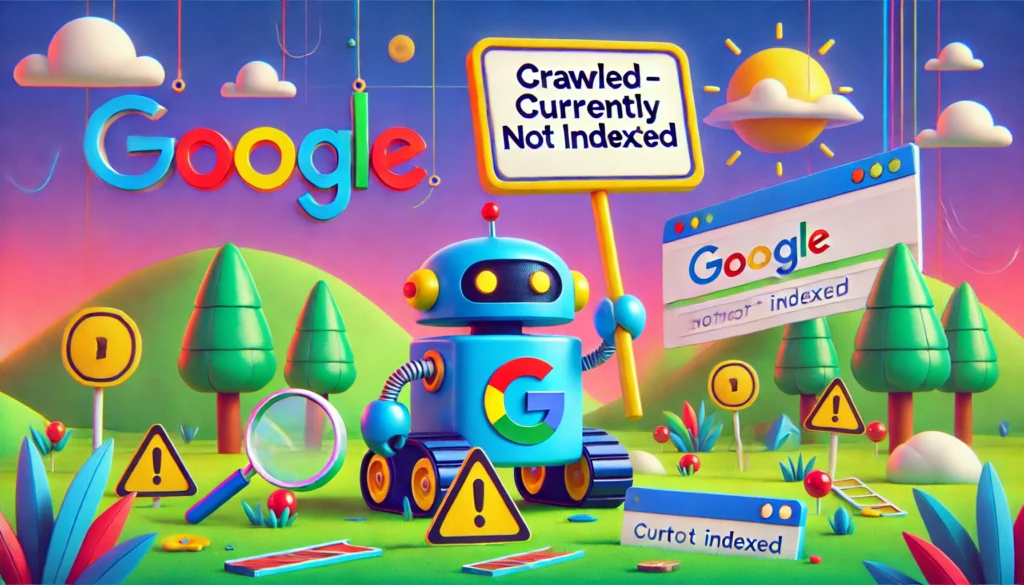Page Is Not Indexed: Crawled – Currently Not Indexed
Page Is Not Indexed: Crawled – Currently Not Indexed Rankingsoul January 14, 2025 No Comments SEO professionals and digital marketers strive toward proper indexing of website pages for high online visibility. It’s troublesome and frightening to webmasters to see the error message Page is not indexed: crawled currently not indexed in Google Search Console. Such is a message meaning-a page that Google crawled but did not index (and thus the page would not show up on search queries)-is normally due to quality, relevance, or technical issues. Thus, rightly identifying and resolving this problem becomes paramount in improving search performance. In this article, we will explore all causes of this issue with actionable solutions to help ensure successful indexing of your web pages and their appearance in search results. There, we explore how to address this problem efficiently while leveraging best SEO practices. GET IN TOUCH Send Us Send Us Any Question or Problem We Will Answer It without Any Cost What Does “Page Is Not Indexed: Crawled Currently Not Indexed” Mean? The error Page is not indexed: crawled currently not indexed is reported in the Google Search Console when: Googlebot successfully crawls the URL. However, the page has not been included in Google’s index at that point. Though it may appear to be really puzzling, it signals that one needs to take a hard look at the page for quality, relevance, and/or technical issues that may be preventing indexing. In addressing such factors, a well-thought-out approach is needed. Common Causes of This Error crawled currently not indexed 1. Low-Quality Content High distinctive and valuable-quality content gets preference from Google. It will be less likely to index sites with duplicate, thin, and poorly written content. 2. Crawl Budget Limitations For bigger sites, Google allocates a crawl budget-the number of pages it can crawl in one session. This can be squandered by poor site structure or by a large number of low-priority pages, leaving important pages ignored. 3. Technical Errors Issues like broken links, server errors, or improper use of meta tags (e.g., “noindex”) can obstruct indexing. 4. Lack of Backlinks Such a page without internal or external links is neither authority-based nor crucial enough in the eyes of Google. 5. Duplicate or Canonicalization Issues Google often avoids indexing pages that appear similar due to duplicate content or conflicting canonical tags. Step-by-Step Solutions to Fix This Error 1. Optimize Content Quality Enhance Relevance: Ensure that your content provides unique insights, solutions, or perspectives. Target Keywords: Use focus keywords like “Add My Business Address in Google Map“ strategically in headings, meta descriptions, and throughout the content. Maintain Readability: Use an user-friendly tone tone with short paragraphs, bullet points, and doc styling. 2. Manage Your Crawl Budget Prioritize Important Pages: Use the robots.txt to block crawling for irrelevant pages like tags, categories, or admin areas. Regular Audits: Use tools like Screaming Frog to point out crawl anomalies. Fix Crawl Errors: As fast as possible, address 404 errors, broken links, and server issues. 3. Address Technical Errors Meta Tag Review: Ensure that there aren’t any no-index tags on the pages that the search engines are supposed to rank. Canonical Tags: Make sure that there are no conflicts with any canonical tags because the most-a quality should point to the correct version of the page. XML Sitemap Submission: Update your sitemap and submit it in Google Search Console for better efficiency in crawling the site. 4. Build Internal and External Links Internal Linking: Establish contextual links from other reputable pages on your site to pinpoint the troubled page. External Backlinks: Utilize guest posts, partnerships, and social media promotion to earn backlinks for the page. 5. Improve Page Performance Page Speed: Optimize loading speeds with the help of tools like Google PageSpeed Insights. Mobile-Friendliness: Ensure that your website is mobile-friendly and provides a seamless experience across all devices. Advanced Strategies for Ensuring Indexing 1. Use Fetch as Google Use the “URL Inspection Tool” in Google Search Console to request manual indexing of important pages. 2. Analyze Competitor Pages Evaluate the competing pages for the same keywords to find out what the gaps are in your content or structure. 3. Monitor Changes with Analytics Using tools such as Google Analytics or Ahrefs, track your traffic as well as indexing trends. 4. Engage in Content Freshness Refresh your stale content regularly to keep it relevant in the eyes of Google. 5. Review Structured Data Make sure to add schema markup to assist search engines in understanding and displaying your content better. How Long Does It Take to Resolve This Error? It’s never easy to address the page is not indexed: crawled currently not indexed issue. Depending on how serious the problems are, it could take from several days to several weeks for a fix in place to index any one page. Conclusion Resolving the Page is not indexed: crawled currently not indexed message shows improvement in the site’s search visibility. Build quality content, carry out technical optimization, and employ strategic linking to help Google index your pages fast. Consistent monitoring and proper maintenance are keys to keep performance up. Frequently Asked Questions 1. Why does Google crawl my page but not index it? Google might crawl a page but choose not to index it due to low content quality, duplicate issues, or lack of authority. 2. How can I check if my page is indexed? Use Google Search Console or type “site:yourdomain.com/page-url” in Google to verify if your page is indexed. 3. What should I do if my page is still not indexed after fixing errors? Re-submit the page in Google Search Console, build more backlinks, and monitor changes over time to encourage indexing. If you find it helpful then share it

